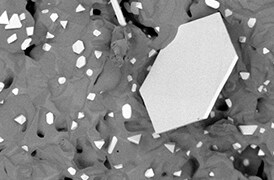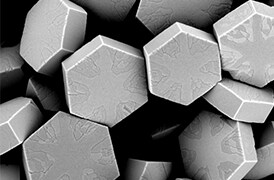Automated large volume SIMS analysis
Achieve detailed and extensive analysis with fewer artifacts, enhancing data accuracy and reliability.
3D SIMS imaging of uneven surfaces
Particularly beneficial for analyzing particle materials, such as battery electrodes, enabling comprehensive characterization.
Optimized geometry for SIMS
Automated functions and image matching for pre-alignment before capturing 3D SIMS data, along with stage rotation and tilting at optimized positions to ensure precision.
Seamless operation
SIMS data acquisition is fully integrated into Auto Slice & View 5 Software, ensuring a smooth and efficient user experience.
With these advancements, 3D SIMS offers outstanding capabilities for researchers and industry professionals, enabling more detailed and accurate analysis of complex materials.


















